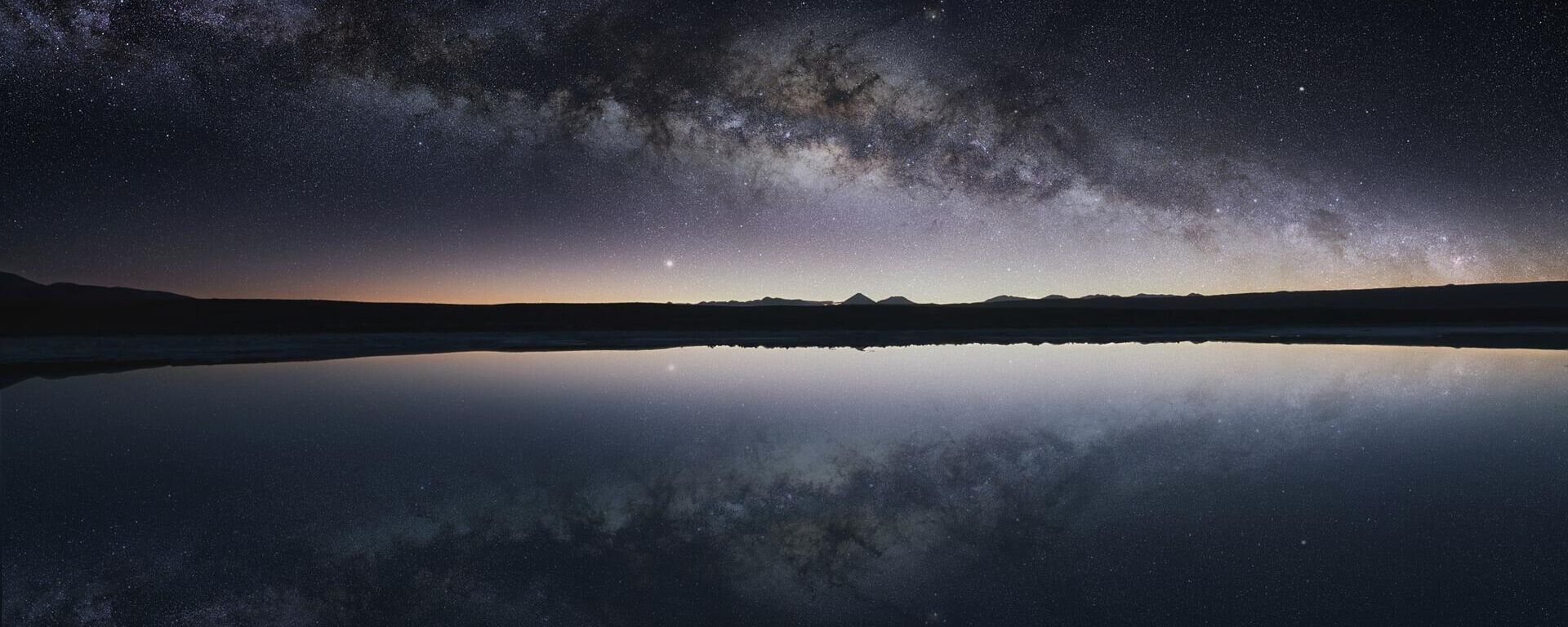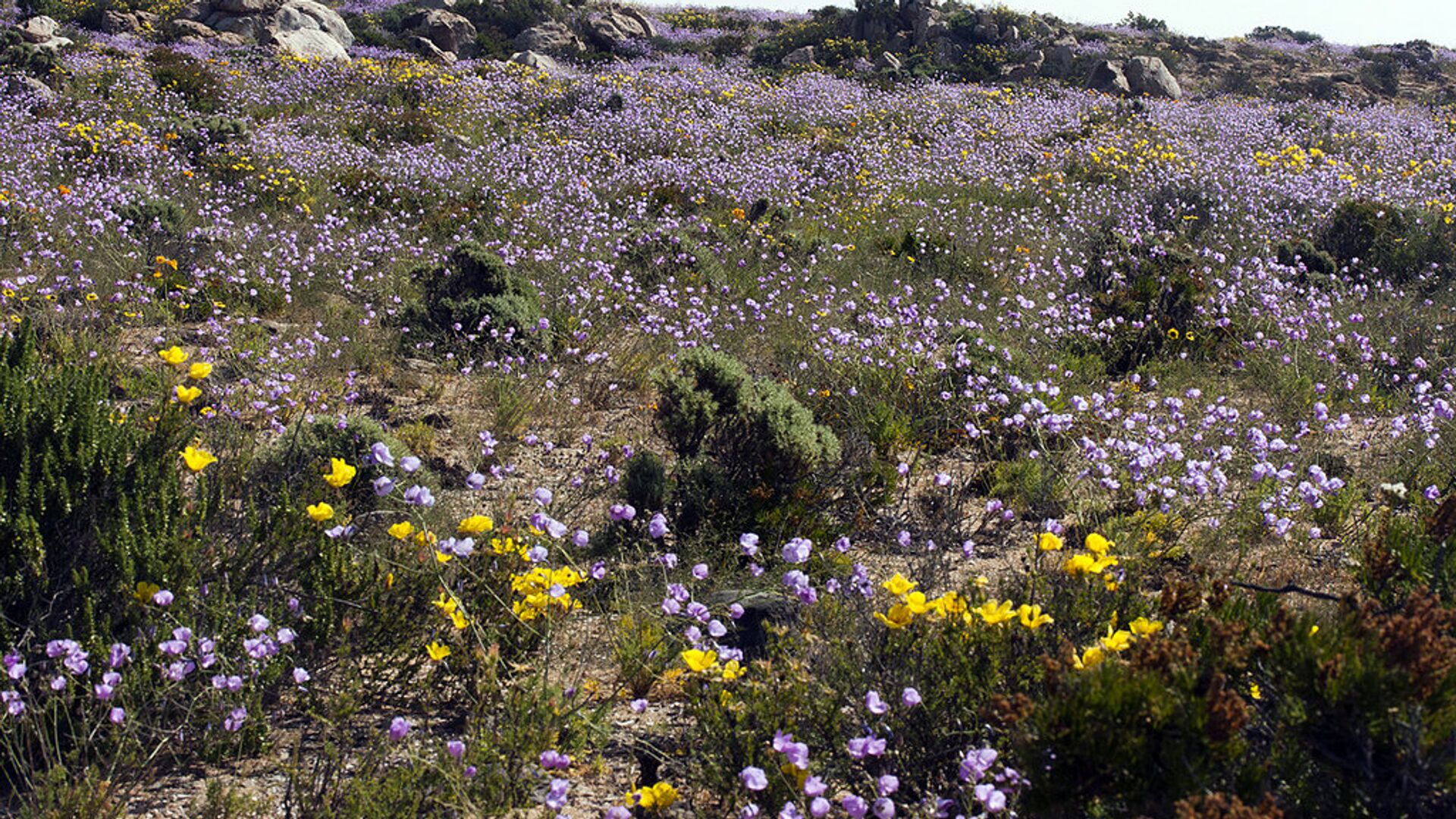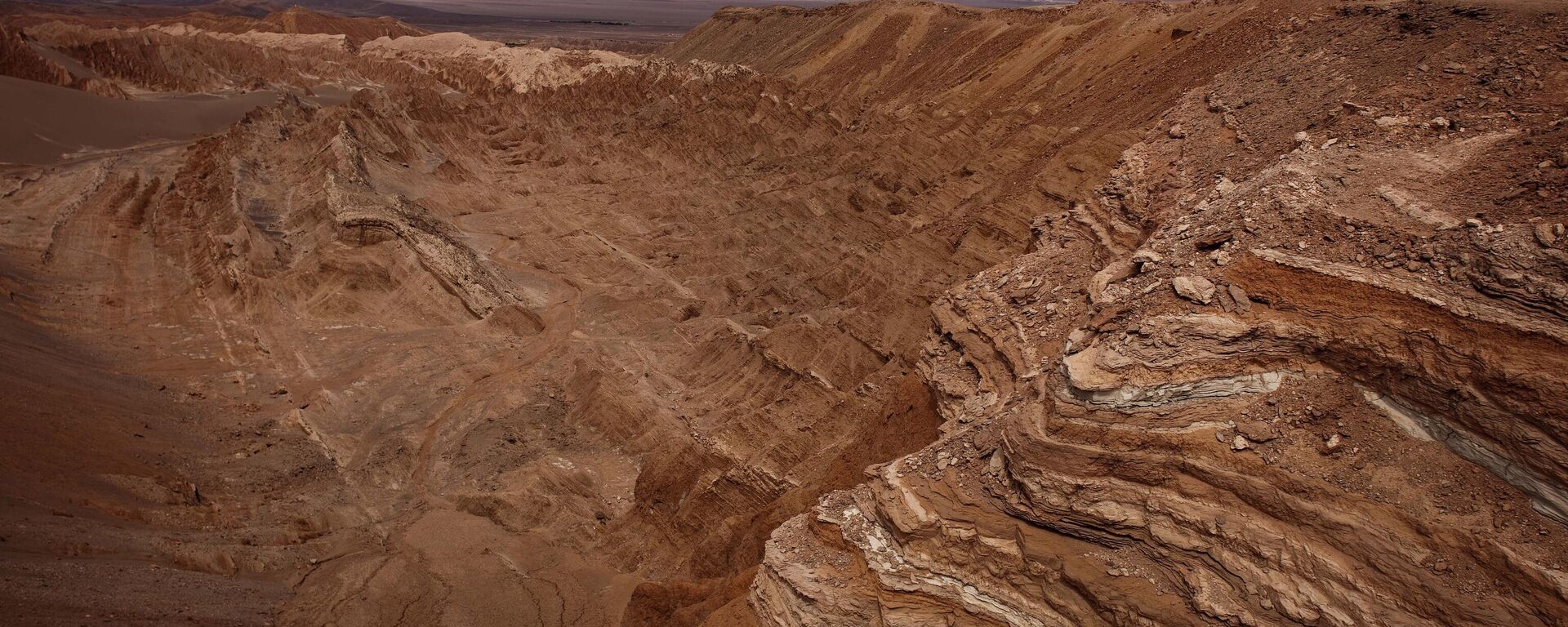https://sputnikglobe.com/20240101/hidden-in-pixels-checking-satellite-images-scientist-uncover-a-world-buried-in-time-1115917394.html
Hidden in Pixels: Checking Satellite Images, Scientist Uncover a World Buried in Time
Hidden in Pixels: Checking Satellite Images, Scientist Uncover a World Buried in Time
Sputnik International
The formations in Atacama's lagoons mirrored ancient rock structures. Measuring around 4 meters across and several meters high, they flaunted shades from brown to green, each shade pointing to a unique microbe community.
2024-01-01T04:07+0000
2024-01-01T04:07+0000
2024-01-01T04:07+0000
beyond politics
science & tech
brian hynek
society
newsfeed
argentina
world
earth
https://cdn1.img.sputnikglobe.com/img/102941/78/1029417877_0:54:1024:630_1920x0_80_0_0_10a7487c8d3ec37c38376e6a3005c33a.jpg
In Argentina's Puna de Atacama desert, satellite imagery captured by CU Boulder geologist Brian Hynek revealed intriguing green and blue formations amidst the vast grey expanse of salt and sand plains.The Puna de Atacama, perched over 3,000 meters above sea level and encircled by the towering peaks of the Andean Mountain Range, ranks among the world's driest regions. It is a land where rain is a rare occurrence, and the blazing sun makes life challenging. The peculiar spots Hynek noticed were not likely to be plant life or artificial constructs.Joining forces with Maria Farías, an expert microbiologist from PUNA.BIO Environmental Consulting, Hynek, set out to unravel this mystery.After an arduous journey through rugged terrain, they stumbled upon twelve lagoons. Surprisingly, these lagoons housed a distinctive microbial community that constructed impressive rock structures within their depths.Drawing parallels with stromatolites, ancient microbial formations dating back over 3.5 billion years, Hynek speculated that these lagoons might showcase some of Earth's earliest life forms.Describing their significance, Hynek, who holds positions in the Laboratory for Atmospheric and Space Physics (LASP) and the Department of Geological Sciences, told media: “This lagoon could be one of the best modern examples of the earliest signs of life on Earth. It’s unlike anything I’ve ever seen or, really, like anything any scientist has ever seen.”Stromatolites, characterized by microbial layers embedded in rock, are still found today, albeit on a smaller scale. The ancient varieties, reaching heights of up to six meters, actively absorbed minerals from their surroundings, creating distinctive mineral deposits.The rock structures in Atacama's lagoons echoed the characteristics of these ancient formations. Spanning approximately four meters in width and several meters in height, they displayed vibrant hues ranging from brown to pink to green. Each color signifies a unique ancient microbial community: brown for anaerobic species, pink for salt-tolerant organisms, and green for photosynthetic cyanobacteria that formed the stromatolite exteriors — layered sedimentary formations.The lagoons' existence in such a challenging environment puzzled researchers. Hynek proposed that these waters might only sustain specific microscopic life with their unique saltiness and acidity combined with intense solar radiation.After sharing their ground-breaking observations at the AGU annual meeting, Hynek and Farías are eager to return to the lagoons.However, there is a pressing concern. A private company has obtained rights to the region, intending to extract lithium and other rare elements from the lagoons.Expressing his concerns, Hynek remarked: “This entire, unique ecosystem could be gone in a matter of years. We’re hoping that we can protect some of these sites, or at least detail what’s there before it’s gone or disturbed forever.”
https://sputnikglobe.com/20230224/mystery-dna-of-organisms-unknown-to-science-found-in-chiles-atacama-desert--1107771827.html
https://sputnikglobe.com/20230724/atacamas-altiplano-sets-incredible-solar-irradiance-world-record-1112107967.html
argentina
world
earth
Sputnik International
feedback@sputniknews.com
+74956456601
MIA „Rosiya Segodnya“
2024
Chimauchem Nwosu
https://cdn1.img.sputnikglobe.com/img/07e7/09/01/1113046371_0:99:1536:1635_100x100_80_0_0_9c5c627283eca931c39fe4852bbb301c.jpg
Chimauchem Nwosu
https://cdn1.img.sputnikglobe.com/img/07e7/09/01/1113046371_0:99:1536:1635_100x100_80_0_0_9c5c627283eca931c39fe4852bbb301c.jpg
News
en_EN
Sputnik International
feedback@sputniknews.com
+74956456601
MIA „Rosiya Segodnya“
Sputnik International
feedback@sputniknews.com
+74956456601
MIA „Rosiya Segodnya“
Chimauchem Nwosu
https://cdn1.img.sputnikglobe.com/img/07e7/09/01/1113046371_0:99:1536:1635_100x100_80_0_0_9c5c627283eca931c39fe4852bbb301c.jpg
atacama, lagoon rock formations, ancient relics, microbial types, atacama's lagoons, microbial communities, atacama's rocks, distinct microbes, age-old formations, diverse microbial groups.
atacama, lagoon rock formations, ancient relics, microbial types, atacama's lagoons, microbial communities, atacama's rocks, distinct microbes, age-old formations, diverse microbial groups.
Hidden in Pixels: Checking Satellite Images, Scientist Uncover a World Buried in Time
The formations in Atacama's lagoons mirrored ancient rock structures. Measuring around 4 meters across and several meters high, they flaunted shades from brown to green, each shade pointing to a unique microbe community.
In Argentina's Puna de Atacama desert, satellite imagery captured by CU Boulder geologist Brian Hynek revealed intriguing green and blue formations amidst the vast grey expanse of salt and sand plains.
The Puna de Atacama, perched over 3,000 meters above sea level and encircled by the towering peaks of the Andean Mountain Range, ranks among the world's driest regions. It is a land where rain is a rare occurrence, and the blazing sun makes life challenging. The peculiar spots Hynek noticed were not likely to be plant life or artificial constructs.
Joining forces with Maria Farías, an expert microbiologist from PUNA.BIO Environmental Consulting, Hynek, set out to unravel this mystery.

24 February 2023, 14:38 GMT
After an arduous journey through rugged terrain, they stumbled upon twelve lagoons. Surprisingly, these lagoons housed a distinctive microbial community that constructed impressive rock structures within their depths.
Drawing parallels with stromatolites, ancient microbial formations dating back over 3.5 billion years, Hynek speculated that these lagoons might showcase some of Earth's earliest life forms.
Describing their significance, Hynek, who holds positions in the Laboratory for Atmospheric and Space Physics (LASP) and the Department of Geological Sciences, told media: “This lagoon could be one of the best modern examples of the earliest signs of life on Earth. It’s unlike anything I’ve ever seen or, really, like anything any scientist has ever seen.”
Stromatolites, characterized by microbial layers embedded in rock, are still found today, albeit on a smaller scale. The ancient varieties, reaching heights of up to six meters, actively absorbed minerals from their surroundings, creating distinctive mineral deposits.
The rock structures in Atacama's lagoons echoed the characteristics of these ancient formations. Spanning approximately four meters in width and several meters in height, they displayed vibrant hues ranging from brown to pink to green. Each color signifies a unique ancient microbial community: brown for anaerobic species, pink for salt-tolerant organisms, and green for photosynthetic cyanobacteria that formed the stromatolite exteriors — layered sedimentary formations.
The lagoons' existence in such a challenging environment puzzled researchers. Hynek proposed that these waters might only sustain specific microscopic life with their unique saltiness and acidity combined with intense solar radiation.
After sharing their ground-breaking observations at the AGU annual meeting, Hynek and Farías are eager to return to the lagoons.
However, there is a pressing concern. A private company has obtained rights to the region, intending to extract lithium and other rare elements from the lagoons.
Expressing his concerns, Hynek remarked: “This entire, unique ecosystem could be gone in a matter of years. We’re hoping that we can protect some of these sites, or at least detail what’s there before it’s gone or disturbed forever.”







